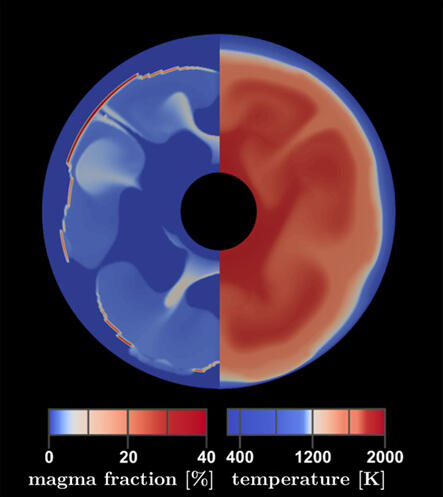A research group led by Professor Masanori Kameyama from the Geodynamics Research Center at Ehime University, Mr. Kenyo U (a graduate student at the time of the research) and Associate Professor Masaki Ogawa (at the time of the research) from the Graduate School of Arts and Sciences at the University of Tokyo, Visiting Joint Researcher Gaku Nishiyama from the Graduate School of Science at the University of Tokyo, and Senior Researcher Takehiro Miyagoshi from the Japan Agency for Marine-Earth Science and Technology announced that they have clarified through numerical simulations of the lunar interior that changes in magma ascent mechanisms caused localized volcanic activity on the Moon lasting up to 3 billion years. This achievement is expected to provide guidance for future lunar exploration missions. Their results were published in the international academic journal Geophysical Research Letters on April 25.

Provided by Kenyo U
The remnants of magma that erupted on the Moon are likened to the pattern of a rabbit pounding rice cakes, visible on the full moon, indicating that there was active volcanic activity. In particular, a large part of the Procellarum basin, corresponding to the "rabbit" and "mortar," has been observed to have had active volcanic activity starting about 4 billion years ago, peaking around 3.5 billion years ago, and continuing for several billion years afterward. However, the reason for this long-term volcanic activity has remained unclear. Therefore, the research group conducted numerical simulations of lunar interior evolution using a two-dimensional model that incorporated magmatism (the effects of magma generation and migration) into a mantle convection model.
As a result, they successfully reproduced long-term volcanic activity spanning 3 billion years. They found that early volcanic activity was caused by the active ascent of magma generated in the lunar depths heated by radioactive elements, while relatively recent volcanic activity was triggered by the reaction (counterflow) from the sinking of high-density materials.
They also found that long-term volcanic activity became locally prominent due to the presence of radioactive element enrichment zones directly beneath the crust (regions where high-density materials rich in ilmenite are concentrated).
This suggests that even though the Moon is a small celestial body, its interior may have been a dynamically fluid environment over long periods.
It also shows that regions rich in radioactive elements exist directly beneath the crust and may be closely related to internal heterogeneity throughout the Moon.
Kameyama and U commented: "This research revealed that the changes in the lunar interior caused by magma were extremely dynamic. The ability to efficiently execute advanced calculations that simultaneously handle magma ascent and mantle movement using supercomputers such as 'Fugaku' led to these results. In the future, we would like to expand to three-dimensional spherical models that simulate the lunar mantle and challenge ourselves to achieve a more faithful reproduction of the lunar interior."
Journal Information
Publication: Geophysical Research Letters
Title: Long-Lasting Volcanism of the Moon Aided by the Switch in Dominant Mechanisms of Magma Ascent: Role of Localized Radioactive Enrichment in a Numerical Model of Magmatism and Mantle Convection
DOI: 10.1029/2025GL115215
This article has been translated by JST with permission from The Science News Ltd. (https://sci-news.co.jp/). Unauthorized reproduction of the article and photographs is prohibited.




